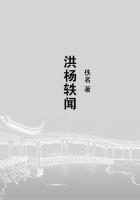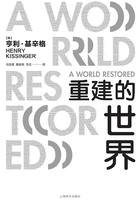It follows rather from what has been set forth above that the annual rate of surplus-value coincides only in one single case with the real rate of surplus-value which expresses the degree of exploitation of labour; namely in the case when the advanced capital is turned over only once a year and the capital advanced is thus equal to the capital turned over in the course of the year, when therefore the ratio of the quantity of the surplus-value produced during the year to the capital employed during the year in this production coincides and is identical with the ratio of the quantity of surplus-value produced during the year to the capital advanced during the year.
A) The annual rate of surplus-value is equal to the quantity of surplus-value produced during the year -------------------------------------------------- variable capital advancedBut the quantity of the surplus-value produced during the year is equal to the real rate of surplus-value multiplied by the variable capital employed in its production. The capital employed in the production of the annual quantity of surplus-value is equal to the advanced capital multiplied by the number of its turnovers, which we shall call n. Formula A is therefore transformed into the following:
B) The annual rate of surplus-value is equal to the real rate of surplus-value x variable capital advanced x n -------------------------------------------------------------- variable capital advancedFor instance, in the case of capital B = 100 x 5,000 x 1 / 5,000 , or 100%.
Only when n is equal to 1, that is, when the variable capital advanced is turned over only once a year, and hence equal to the capital employed or turned over during a year, the annual rate of surplus-value is equal to its real rate.
Let us call the annual rate of surplus-value S', the real rate of surplus-value s', the advanced variable capital v, the number of turnovers n . Then S' = s'v n /v = s' n . In other words, S' is equal to s' n , and it is equal to s' only when n = 1, and hence S' = s' times 1, or s'.
It follows furthermore that the annual rate of surplus-value is always equal to s' n , i.e., to the real rate of surplus-value produced in one period of turnover by the variable capital consumed during that period, multiplied by the number of turnovers of this variable capital during one year, or (what amounts to the same) multiplied by its inverted time of turnover calculated for one year. (If the variable capital is turnover over ten times per year, then its time of turnover is 1/10of a year; its inverted time of turnover therefore 10/1 or 10.)It follows furthermore that S' = s' when n is equal to 1. S' is greater than s' when n is greater than 1; i.e., when the advanced capital is turned over more than once a year or the turned-over capital is greater than the capital advanced.
Finally, S' is smaller than s' when n is smaller than 1, that is, when the capital turned over during the year is only a part of the advanced capital, so that the period of turnover is longer than one year.
Let us dwell a moment on this last case.
We retain all the premises of our former illustration, except that the period of turnover is lengthened to 55 weeks. The labour-process requires a variable capital of £100 per week, hence £5,500for the period of turnover, and produces every week 100s; s' is therefore 100%, as before. The number of turnovers, n , is here 50/55 or 10/11, because the time of turnover is 1 plus 1/10 of the year (of 50 weeks), or 11/10 years.
S'= 100% x 5,500 x 10/11 / 5,500 = 100 x 10/11 = 1000/11 = 9010/11%. It is therefore smaller than 100%.
Indeed, if the annual rate of surplus-value were 100%, then during the year 5,500v would produce 5,500s, whereas 10/11 years are required for that. The 5,500v produce only 5,000s during one year, therefore the annual rate of surplus-value is 5,000s/5,500v, or 10/11 or 90 10/11%.
The annual rate of surplus-value, or the comparison between the surplus-value produced during one year and the variable capital advanced in general (as distinguished from the variable capital turned over during the year), is therefore no merely subjective comparison; the actual movement of the capital itself gives rise to this contraposition. So far as the owner of capital A is concerned, his advanced variable capital of x500 has returned to him at the end of the year, and x5,000 of surplus-value in addition. It is not the quantity of capital employed by him during the year, but the quantity returning to him periodically that expresses the magnitude of his advanced capital. It is immaterial for the present issue whether at the end of the year the capital exists partly as a productive supply, or partly as money- or commodity-capital, and in what proportions it may have been divided into these different parts. So far as the owner of capital B is concerned, £5,000, his advanced capital, has returned to him besides £5,000 in surplus-value. For the owner of capital C (the last considered, worth £5,500) surplus-value to the amount of £5,000 has been produced during the year (£5,000 invested and rate of surplus-value 100%), but his advanced capital has not yet returned to him, nor has his produced surplus-value.
S' = s' n indicates that the rate of surplus-value valid for the variable capital employed during one period of turnover, to wit, quantity of s produced in one turnover period --------------------------------------------- v employed in one turnover periodmust be multiplied by the number of turnover periods, or of the periods of reproduction of the advanced variable capital, by the number of periods in which it renews its circuit.
We have already seen (Buch I, Kap. IV [English edition: Part II.















